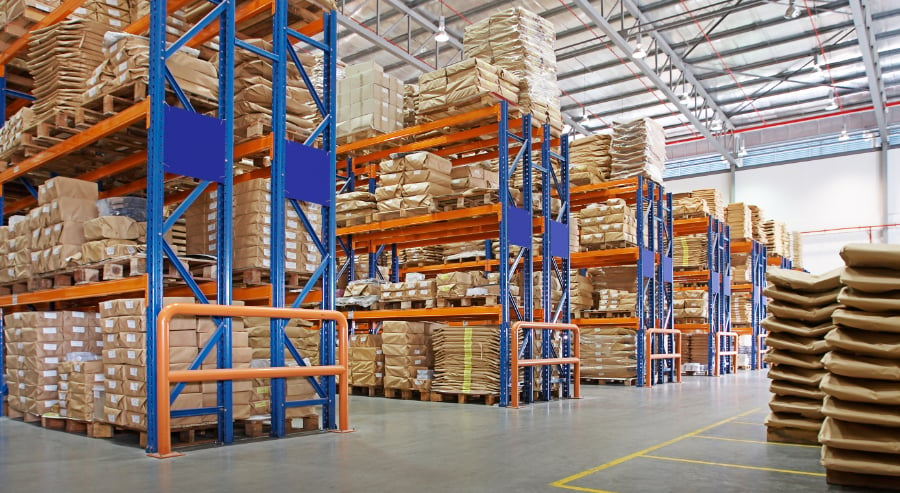
Major online retailers have greatly changed customer expectations regarding the speed of shipping when buying from any business. To meet the demands for faster shipping, many companies are establishing warehouses in new locations, leading to increases in costs.
Whether you're expanding, already operating multiple locations or working out of one warehouse, taking steps to manage your occupancy costs can positively impact your bottom line. Here are some tips to help keep costs under control:
1. Store Vertically as Much as Possible
In your warehouse, you lease space by the cubic foot. If you're not stacking items as high as possible in your space, you're throwing away money. Assess how well you're fully utilizing all three dimensions of your warehouse and look for opportunities to move storage vertically, so you can store more in less floor space.
2. Go Long-Term if Feasible
If you're in the middle of a lease, approach your landlord about renegotiating. You may be able to lower your rent considerably in exchange for extending the term. When you're leasing space for the first time, opting for a long-term lease can give you leverage to negotiate a lower base rental rate. Of course, you'll need to balance your need for flexibility and your desire to reduce occupancy costs. In some cases, your need to shrink, expand or relocate your warehousing may be so great that you can't afford to be locked into a long-term agreement.
3. Invest in a Heat Recovery System in Cold Climates
The material moving equipment used in a warehouse facility gives off a tremendous amount of heat. A heat recovery system allows you to put it to good use. With this type of HVAC technology, thermal energy given off by machinery is captured and redirected to other areas of the warehouse, such as offices and break-rooms. This allows you to heat these spaces during the cold winter months more efficiently to reduce your utility costs.
4. Consider Relocating to an Unconventional Space
Where your warehouse is located has a big impact on your occupancy costs. In areas where demand is high, you'll pay a premium base rent rate. By relocating to a new area, you may be able to slash the amount of rent you pay. One option is to consider converting a vacant retail space into a warehouse. Many large online retailers are using this trick, snatching up empty department stores in shopping malls across the country. With many stores having shuttered due to COVID-19 shutdowns, you may find a glut of vacant retail space in your area.
5. Supplement with Public Warehousing Instead of Expanding for Seasonal Storage
If your business is largely seasonal, it may not make sense for you to lease a warehouse that is large enough to hold all of your inventory during the busiest time of year. Instead, consider leasing a warehouse that is slightly larger in capacity than what you need during the slowest time of year. The additional seasonal inventory can then be outsourced to a public or contract warehouse facility or even stored on-site at your retail locations.
Here are a few other articles we think you'll enjoy:
Negotiating Your Commercial Lease 101
5 Commercial Site Selection Items to Know
10 Modern Features to Look For When Leasing Office Space
Subscribe to our blog for more Commercial Real Estate tips!!








